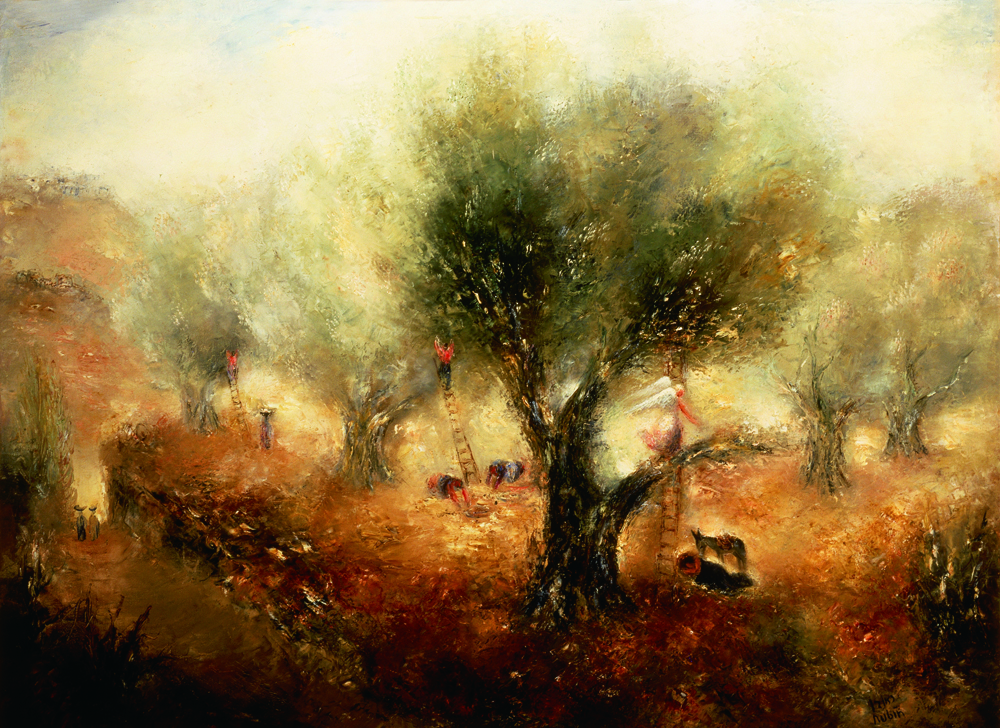
Please Follow us on Gab, Minds, Telegram, Rumble, Gab TV, GETTR
Sigalit Landau is an artist whose name precedes her within Israel and abroad. Over the years her work has dealt with bringing local images to the public eye through unconventional means. The works embody her deep thought and are full of inspiration and imagination.
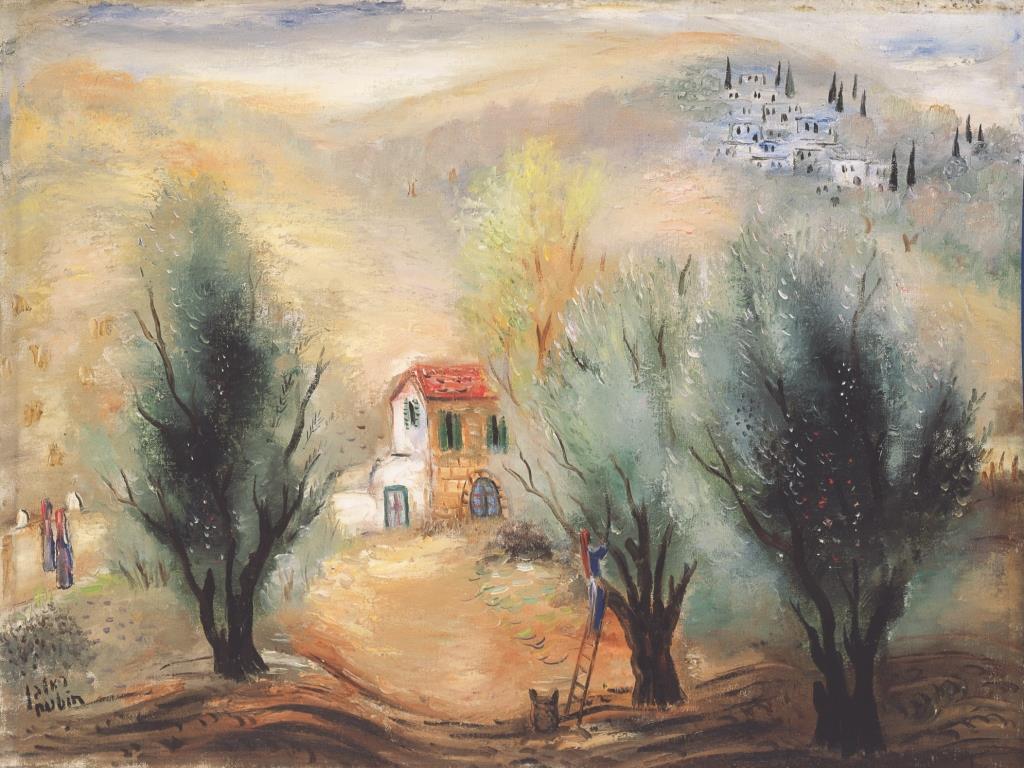
Tel Aviv’s Reuven Rubin Museum has previously displayed works by Landau within a 2009 exhibition called “Watermelons” and within others. However, the current exhibition diverts from its predecessors as this time Landau chose the works and their locations for the display, serving as both artist and curator.
Whether being a new work created specially for the display, or incarnations and adaptations of existing works, all of the present pieces are centered on familiar motifs of her career such as olive trees, watermelons or shoes. The neighborhood found within the exhibition’s paintings seems to thicken the connections between space and time, provoking intergenerational dialogue concerning issues of culture, identity and the implications of the paintings’ interpretations.
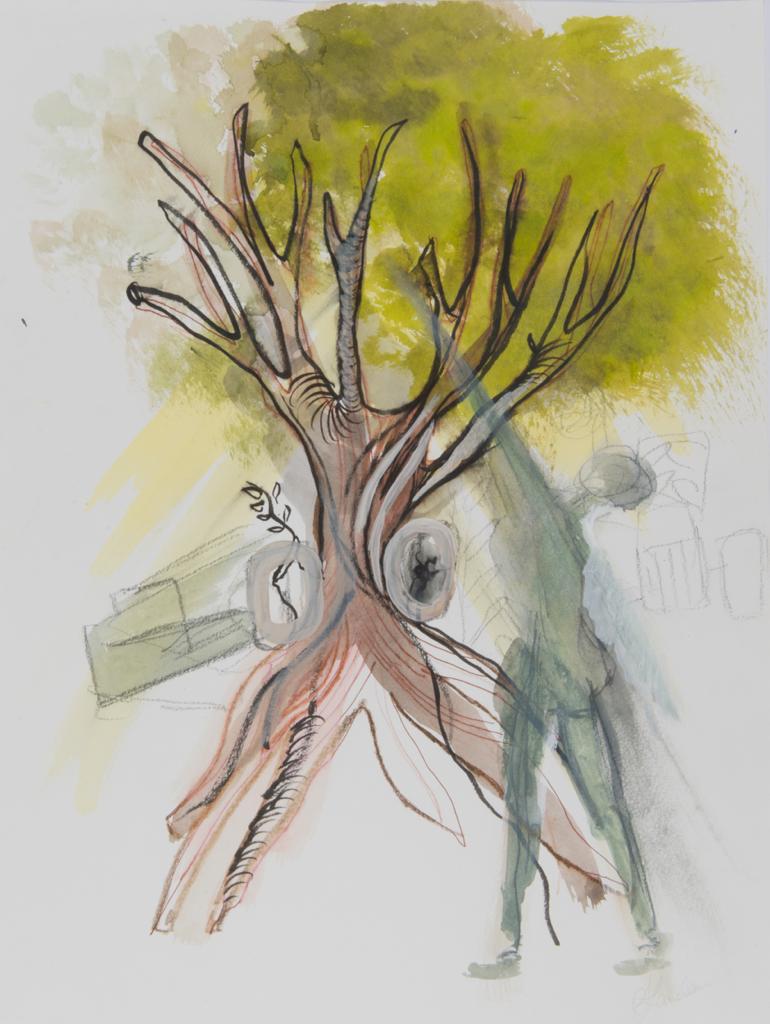
The romantic and mystic symbolism found within the landscapes of Rubin’s olive groves, and the attention paid to the figures of Palestinian harvests in Landau’s “Harvest” video series, reflect changes within Israel and Israeli consciousness.
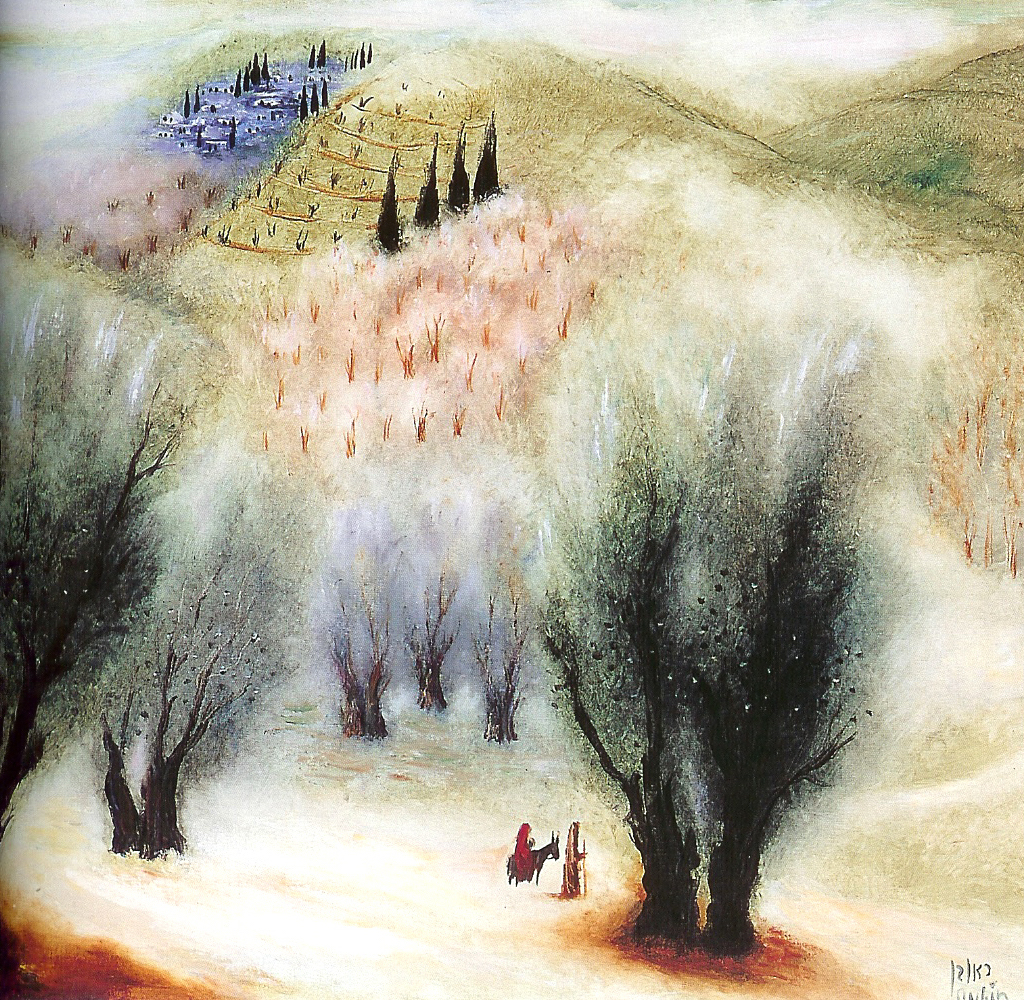
The watermelon motif expresses the complexity of the here and now. The red flesh of the fruit can be interpreted as an analogy to the living, of exposed and wounded flesh. The change it experiences following exposure with salt expresses the perpetual change of matter. With the group of Galilean figures in the painting “Dancing from Meron,” Landau attached an installation centering on a shoe that can also be interpreted as a metaphor for wanderings throughout history. In contrast to the conviction of the devotees who dance with fervor and who direct the sky in Rubin’s painting, the symbolism of the circle of shoes in Landau’s ‘answer’ remains implicit and grounded…
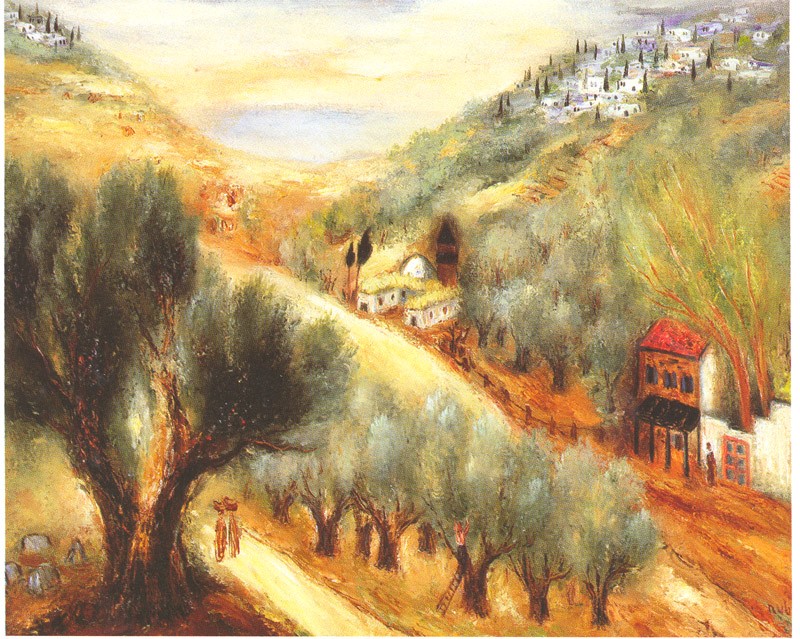
It seems that the dialogue in the exhibition is indicative of different perspectives, of two artists whose world of reference is shared, but from the perspective of distant points in time. Landau seems to be peeling off the romantic Zionist envelope housing the points of attention shared by her and Rubin. When looking at those points from a distance of time, she does so with an inquisitive look, out of sober realism. Landau’s perspective can be understood as a realization of learning experience which raises friction points and unresolved aspects. Although not a distinctly political artist, Landau’s works touch on issues which can be found embedded in her view of life and the history of art.
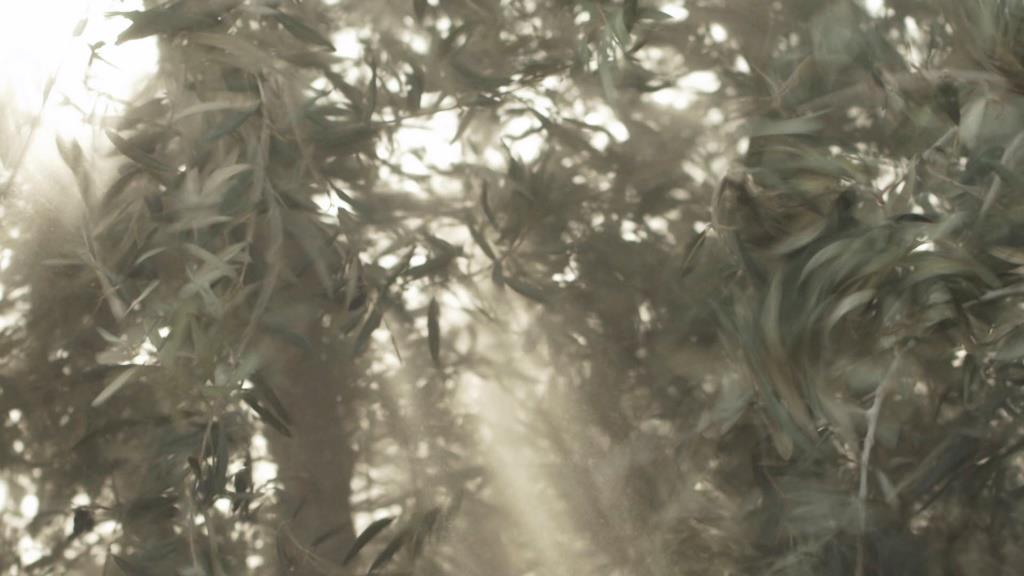
Referring to the ethos of Eretz Israel, the two artists in glorification or skepticism connect the distance of time.
CDMedia is being targeted and obviously too effective! We need your support to put more reporters in the field! Help us here!
- Israel Launches Rare Airstrikes On Syrian Port Close To Russian Airbase
- Hamas Terrorist Attack In Jerusalem’s Old City Kills One, Injures Four


